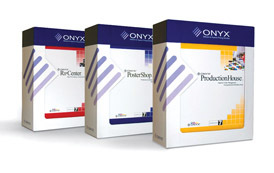I recently took an overnight flight from Baltimore to London, landed, had a quick British breakfast of overstuffed sausage, half-cooked bacon, and baked beans in the terminal, and then caught a late morning flight to Helsinki, Finland. There are only a few customers for whom I will endure a hectic traveling schedule such as this. But I've been visiting the operations of Mr. Claus for years now, and it's become a lot easier over time.
A lot of people in America believe Santa lives at the North Pole, but ask any European and he or she will tell you the truth. Santa lives where the reindeer come from, and that's far up north in the hinterlands of Finland, in a province known as Lapland.
Traveling to visit St. Nick's operations can be quite challenging at times. The security is tighter these days. Gone are the days when you are met by a short guy at the railway station and put on a train with an open-ended ticket. Nowadays, things are a little more organized, and as I check into my hotel, I am handed a note with instructions to meet my handler at the Mockba bar—a small, retro-looking, Moscow-type Helsinki dive that serves the best vodka cocktails to its expatriate Russian clientele. Two hours later I am sitting on a stool admiring the Red Army posters on the wall and marveling at the incredible detail that Russian screen printers achieved back in the 1940s. I'd like to meet the man who made those screens.
Soon I am joined by a short gentleman in a strange hat that speaks English with a clipped accent. I have been called upon because there are serious problems in Santa's print shop, and the operation is falling further and further behind every day. The gentleman looks me in the eye, and I can see the worry etched on his face. On-time delivery is a goal that all my customers strive for, but for this customer there is no room for a late delivery. It's Christmas day or nothing. I reassure him that things can be turned around, and we drink to a successful Christmas season.
The next morning, I head to the platform at the main train station in the heart of downtown Helsinki and climb aboard the bullet train that will whisk me at more than 150 mph deep into the cold, dark, arctic winter. The train is full of chattering children from all over Europe who make this journey every year to deliver their Christmas wishes directly to the man himself. The elves have set up a resort called Santa Land, where kids can get a glimpse of the famous workshop and get a brief face-to-face with Mr. Claus.
For years, Santa was a hands-on CEO; his presence was felt in every department of the workshop. However, since more and more parts of the world began celebrating Christmas, he was forced to delegate much of the effort to his subordinates and spend more of his time on public relations and marketing issues. In the last five years or so, the workshop output has seen double-digit growth, with the final straw being the introduction of the Christmas holiday in Japan a few years back. For the first time ever, it looks like Christmas may have to be postponed for a week or two unless production can be streamlined and the growing scrap rate brought under control.
Advertisement
The department most affected, as always, is screenmaking. That's why I'm here. Santa's workshop overall is suffering from a case of too much growth in too short a time. The workers are toiling all hours of the day, yet they are still falling further and further into the hole. No amount of piped-in Christmas music seems to be able to raise either the low company morale or the sagging production figures.
Several hours later I find myself on a crowded platform shaking the hand of a very small gentleman dressed in green pajamas and an enormous fur coat. He politely inquires about my journey, and soon we are off across the frozen wastes towards the workshop. He fills me in on the problems, and I hear the familiar litany of woes: Nothing registers, the screens break down, the prints look terrible, the colors don't match, and the artwork doesn't line up. What's to be done? Our journey takes us past the new video-game factories and the gleaming, new computer facility, and it's soon very obvious where Santa has been investing his capital of late. This becomes even more apparent when we pull up in front of a large, slightly decrepit, shed-like building, and I get a whiff of that familiar, lacquer-based odor that signals our arrival at the print shop.
The gift of control
I've made a good living over the years from situations just like this, but I've never felt pressure to succeed the way I felt it when I walked onto the shop floor that afternoon. Little people scurried everywhere, and automatic machines clanked and sputtered as far as the eye could see. Every imaginable substrate was being printed—from sweats with flashing Christmas-tree designs to membrane switches for the newest game consoles. No sooner was one job completed than a small army of elves descended on a machine to break down and set up for the next run.
Elves were exposing screens on the largest vacuum frames I had ever seen, while other screens were lined up for hundreds of yards, waiting for the scoop coater or the dry-film applicator. How they ever keep track of all this I'll never know. According to the production-control log, the shop would have to continue operating this way 24 hours a day until Christmas.
I'll let you in on one of the oldest secrets that we learn early on in the consulting business: It's never one big problem that needs solving. In fact, it's almost always the same bunch of little problems that printers can easily correct with a tension meter and a squeegee sharpener. I set to work, ordering a new tension meter for overnight delivery (the old one was broken and sitting in the bottom of a rusty filing cabinet), and had the shop's staff strip the old, worn blades from all the squeegees and replace them with good, sharp stock.
Advertisement
By the second day, we had done our exposure tests and the screens were no longer breaking down. The elves were once again into their uniform tensioning cycles. The jobs began to line up on the printer, but this time the images were sharp and consistent. I backed off the squeegee pressure, the screens stopped breaking on the presses, and the workflow began to pickup.
Why is it that the fundamentals are the first things to be neglected when the pressure is on? I'm not complaining, of course. I have a family to feed, but it would be nice to have some really high-tech problem to solve once in a while.
I had written my report by the end of the week, and the managing elf transferred my recommendations to his wish list and submitted them to his superiors for approval. Maybe by this time next year we can get some UV-curable inks into the mix and speed up the throughput. A new squeegee sharpener also would really make a difference. I caught a glimpse of the big man himself in the corner office on my way back to the bullet train. He was already checking his lists and looked up approvingly. Then, Santa asked me about Christmas wish for the year.
I suppose my wish should have been for all screen printers to finally learn the importance of understanding and applying the basics. However, I knew if my wish were granted, I'd probably be out of a job. So, like many screen printers before me, I took the easy way out. Yes, that plasma screen will look so nice hanging over the mantelpiece, next to the stockings, come Christmas morning.


 Case Studies2 months ago
Case Studies2 months ago
 Art, Ad, or Alchemy2 months ago
Art, Ad, or Alchemy2 months ago
 Andy MacDougall2 months ago
Andy MacDougall2 months ago
 Columns3 weeks ago
Columns3 weeks ago
 Editor's Note3 weeks ago
Editor's Note3 weeks ago
 Marshall Atkinson3 weeks ago
Marshall Atkinson3 weeks ago
 Thomas Trimingham2 months ago
Thomas Trimingham2 months ago
 Case Studies3 weeks ago
Case Studies3 weeks ago















